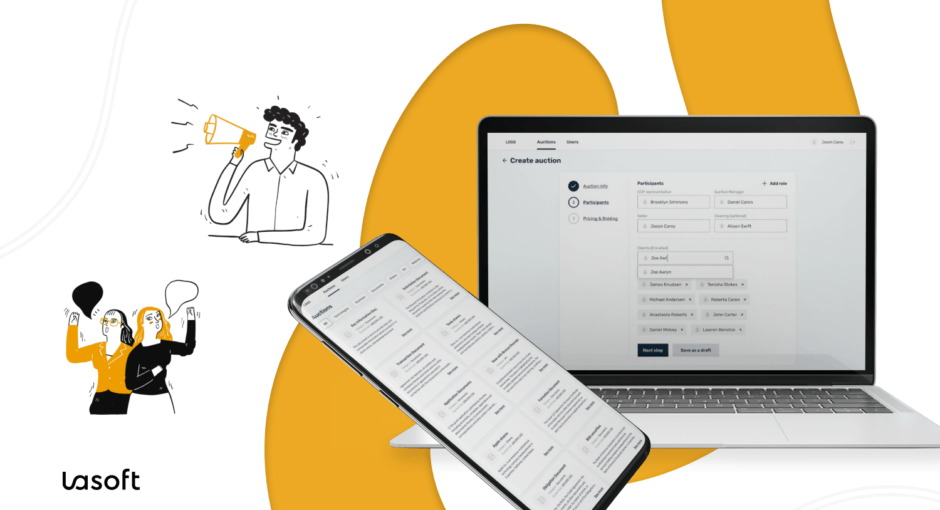Digitization has revolutionized how auctions are conducted; the traditional hotel ballrooms and county courtroom public sales have been replaced with online auctions. Online auctions have become popular among buyers and sellers because of their convenience.
From eBay and Unbid to AuctionZip and ShopGoodwill, more and more FinTech businesses are embracing the online auction model. This article explains how an online auction platform works and reveals the benefits of developing this software for your business.
Benefits of Switching to an Online Auction Platform
Online auctions provide crucial benefits that traditional auction platforms do not offer, such as total transparency and automation. Virtual auction developers usually implement data integrity and traceability systems in their platforms to weed out fraudsters and ensure transactions are properly settled.
With online auction platforms, following and tracking incomplete orders, handling payment transactions, notifying winners, and linking them with the items are a no-brainer since all processes are automated.
In addition, a virtual auction platform allows sellers to customize an auction as they wish. Sellers can extend the auction period, add product descriptions, values, and pictures, and control the bidding increments and starting bids.
The agility of processes and results provided by online auction platforms allow businesses to offer more value to their users as they can collect instant feedback and adjust product prices to fit customer needs.
Finally, as all the data, including bid items, participant details, inventory, and auction-related documents, are saved in one place, managers can easily access reports on whatever information they require and manage them effectively.
How an Online Auction Works
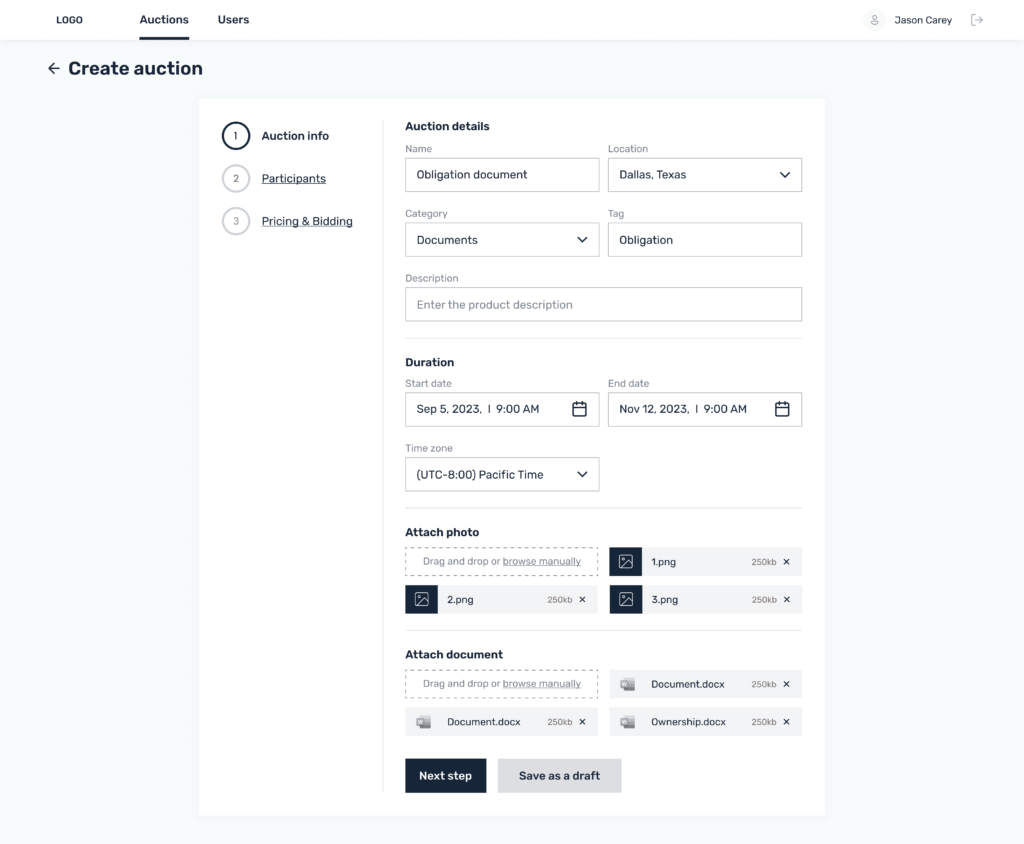
There are several steps that need to be completed to conduct an auction successfully.
First, to create an auction, an organizer registers an account and submits all necessary information to the portfolio, such as accurate product descriptions and images, auction layout, banner image, or logo. The items can be uploaded at once using a spreadsheet or one by one. Most websites support various image formats, including CSV, TXT, and XLSX.
Coming up with a catchy auction title and searchable product descriptions helps to attract prospective buyers to the site. Additional details that improve customer experience may include accepted payment methods and shipping details.
After creating an account, the organizer uses the auction listing function to customize the auction. This includes selecting a category that best suits an auction type (auto, reverse, or incremental) and setting the time and date of the auction.
A virtual auction platform also provides the functionality for setting bids, inviting participants, and notifying clients when an auction begins and ends.
The auction holder can preview a portfolio to see how the submitted products will appear to prospective clients and, when satisfied with the outlook, publish the auction for sale to go live.
Once the auction is live, users can go ahead and preview the portfolio, register, and set bids. Before they place a bid, they must register on the platform; registration simplifies the tracking bids process and creates a database of bidder-seller feedback. The online auction platform provides the bidder management functionality to approve viable bidders and ensure the owner gets accurate bid data.
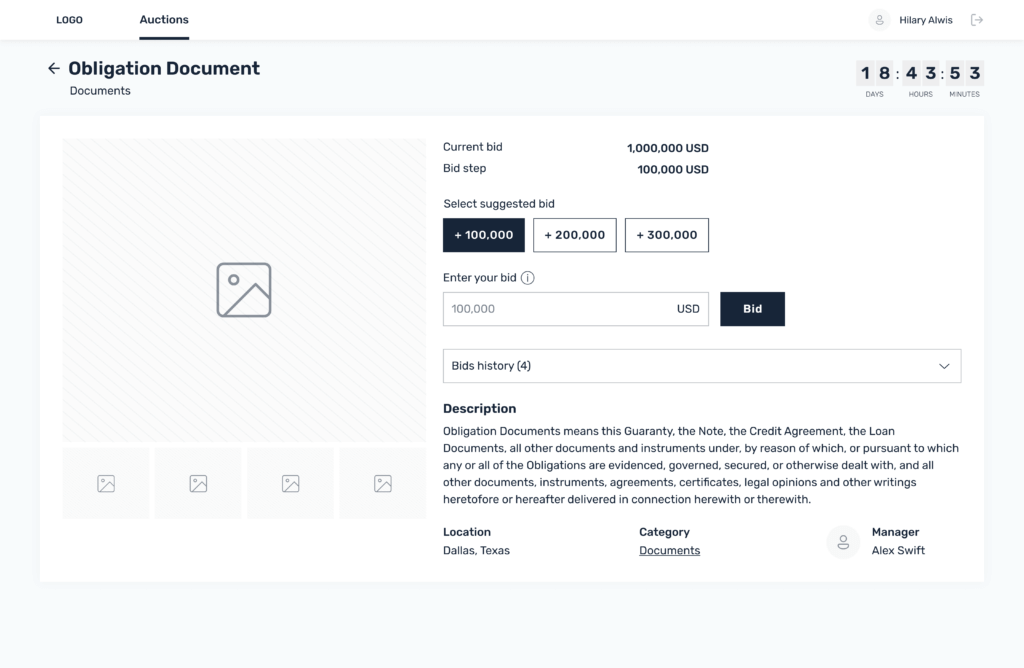
Every item listed on a virtual auction platform is available for a limited time, and prospective buyers must place their bids within this time frame. A seller can monitor auction progress, view sales ratings and statistics, and accept payments in his account.
Once the auction closes, the system emails all involved parties about the ending of the auction. The process of selecting a winner is far much easier than in the traditional approach because the organizer can see all the participants, their bids, and additional information.
The customer with the highest bid is notified that they won and must pay before the product is delivered. The auction will be completed without the winner if the seller sets a reserve price and no bid goes above it. All in all, the seller and winner communicate via email to arrange for shipping and payment of the products.
Using an online auction platform helps to complete the auction without any difficulties. As each product in the portfolio finishes, the seller can send automated emails to the winning bidder and negotiate on the payment and product shipping payment by email. Payments can be made physically or through other methods like money order, personal check, debit, or credit card. The platform’s order management functionality lets sellers check on a buyer’s checkout progress.
How an Online Auction Platform Helps Improve Auction Participants’ Quality
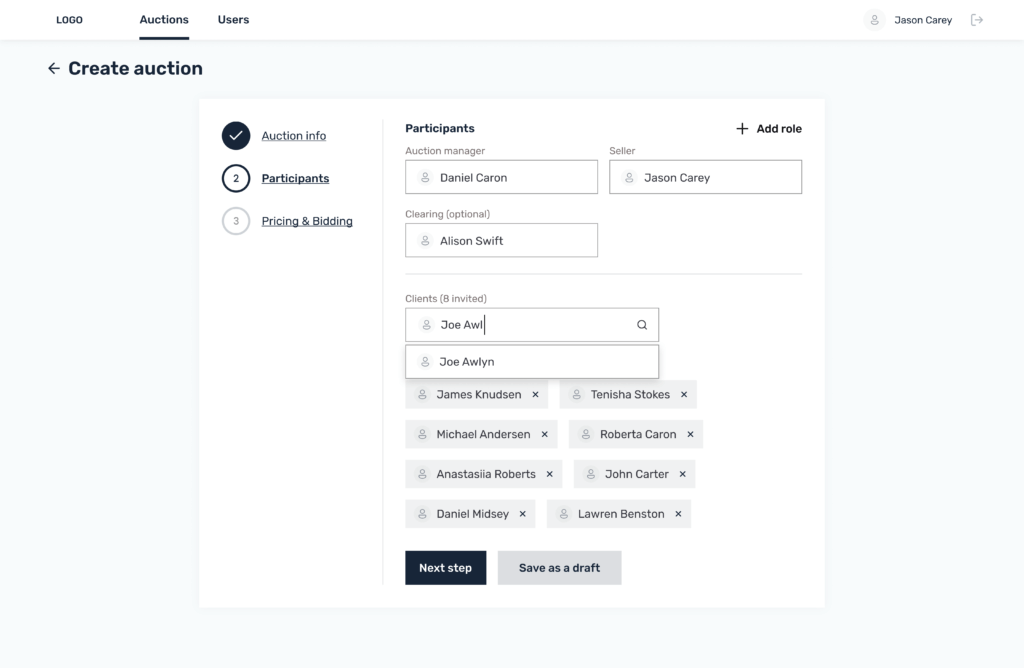
In addition to facilitating the auction flow, an online auction platform also helps qualify its participants. The verification process involves determining if the participants have the financial capability to pay for products and their commitment to the set auction procedures.
When the auction organizer creates a new auction, they set the auction rules, assign roles, define auction procedures and practices, design a testing process, and identify all possible risks and a way to mitigate them.
To participate in auctions, participants verify they understand auction risks and rules and provide details on their financial situation and other required information. Participants also pass various testing sessions conducted by the owner.
Having access to participants’ details and bidding history, the organizer can quickly determine if users can or can’t participate in specific auctions.
Additionally, some online auction systems provide an e-signature solution to facilitate a signing process once the owner ensures everyone has received their contract and understood its terms and conditions. Once all parties have signed the contracts, their information is stored on a specific centralized form, and the organizer ensures that the auction details aren’t leaked.
In the end, the manager prepares an auction summary detailing the logic for selecting the winner and sends it as a document to the verified participants.
How an Online Auction Platform Helps Manage Auctions
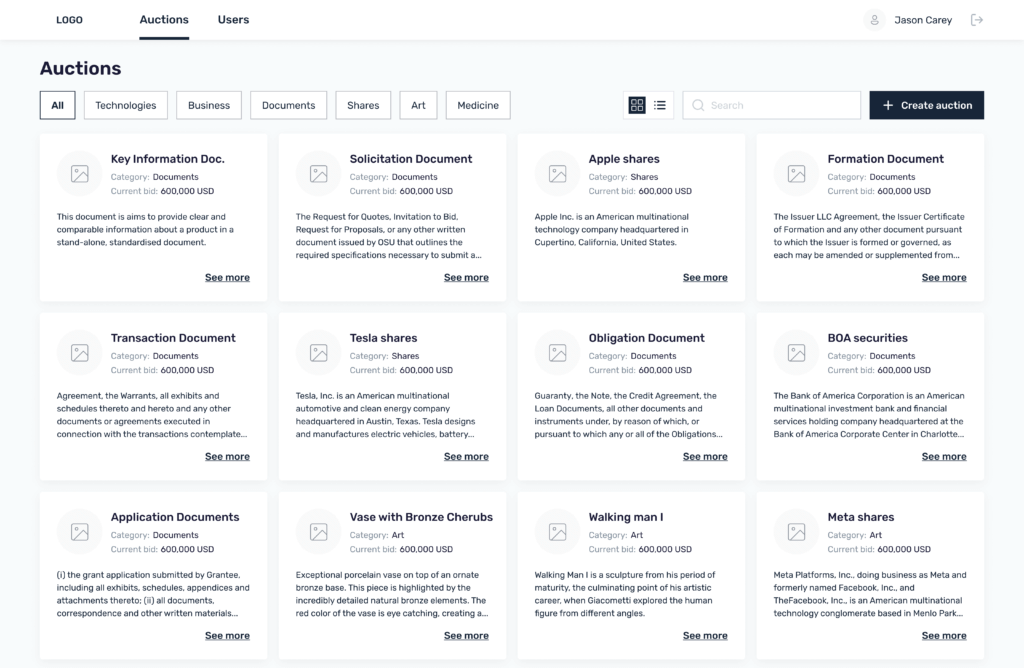
An online auction platform can be used as a high-class auction storage solution by providing functionalities that allow sellers to save details on past, current, and planned auctions. This typically includes all bidder details, sales, inventory, and revenue generated. The software pulls various reports from the auction management dashboard whenever necessary.
What’s more, a virtual auction helps owners decide on the best type of listing depending on the products’ costs.
Here are the different listings online platforms offer:
- Reserve price: Seller sets a minimum price for their product.
- Fixed price: This allows buyers to purchase a product at its actual price without bidding.
- Dutch auction: The cost of the auctioned product reduces from the initial price till a buyer is found.
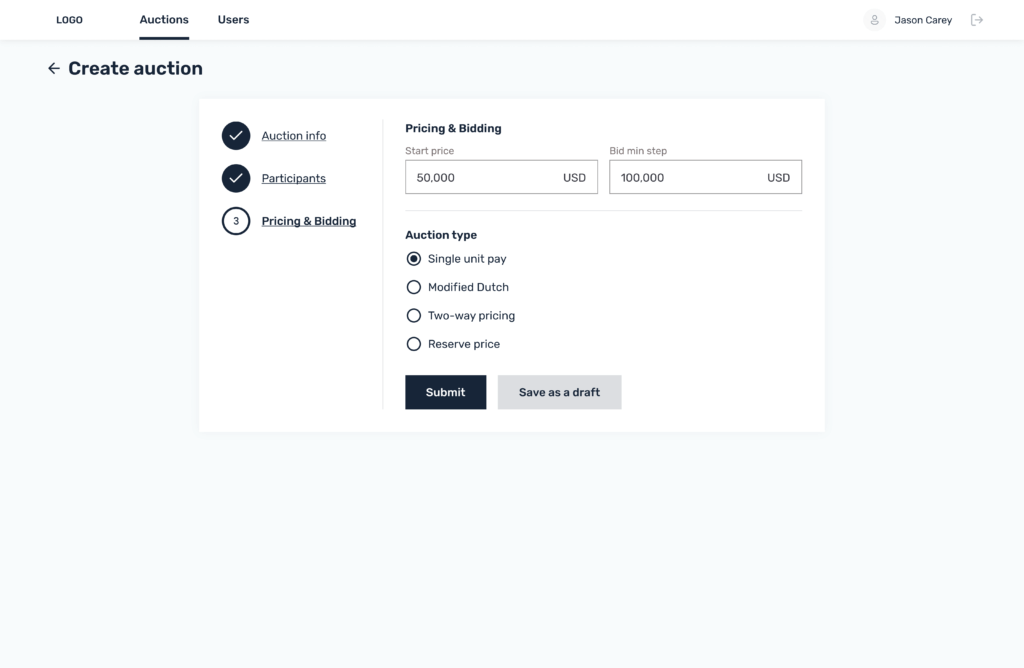
To secure the auction process, specialized software usually comes with risks and auction practices and procedures.
The organizer can also monitor auction results through a dashboard that shows an auction’s progress and alerts all parties involved when a winner is selected.
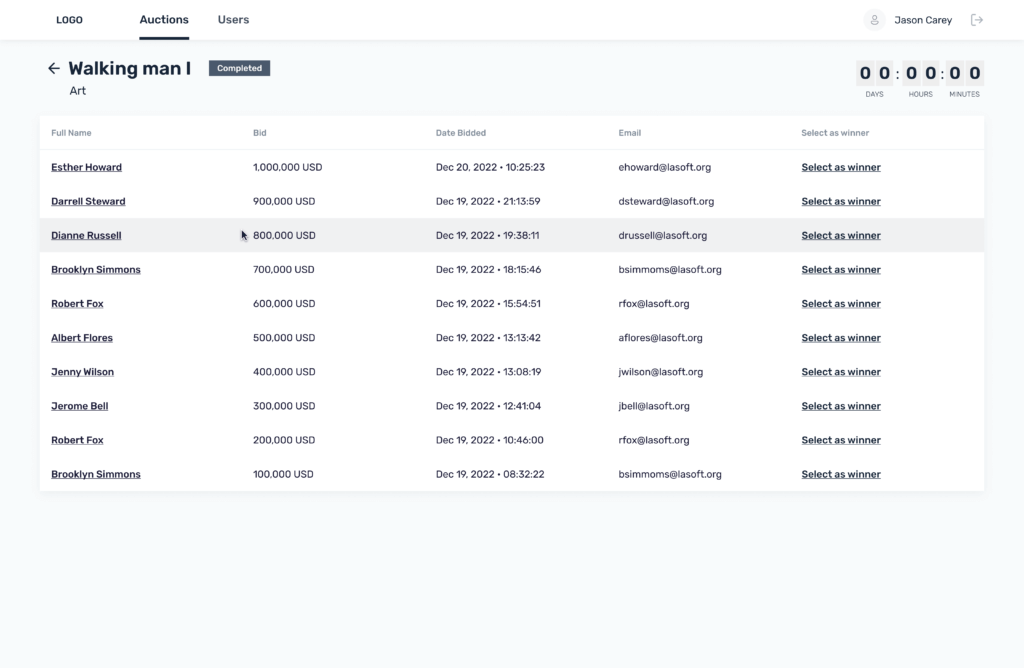
Once a winner has been selected, the software simplifies the check-out process by linking winners with the items won and generating sales documentation. The system can also assist sellers in following up and tracking incomplete orders.
The Role of LaSoft in Online Auction Platform Development
At LaSoft, we use a client-oriented approach to help our clients get high-end auction platforms tailored to their objectives, needs, and requirements. A user-friendly website that will impress your users from the word go is at the core of our web development process. Through our product discovery process We help to structure all the requirements and make the system clear and easy to use.
Striving for maximum performance and optimization, we implement advanced solutions that help automate processes such as downloading and generating reports. As a result, platform owners can dedicate more time to do strategic work.
Our Product Design team creates and uses simple logic flows to enhance customer communication. This makes it easier for our engineers and clients to deliberate on the function and design process.
Talking about the production process, before the first line of code is written, we map out the user interface on the prototypes to ensure we clearly understand clients’ expectations.
With LaSoft, you are assured of a high-quality auction platform since we test the product during different development stages to ensure the product operates properly, smoothly, and without any flaws.
Conclusion
Online auction platforms have changed the way how auctions are conducted and are slowly replacing traditional physical events.
For auction businesses, having a virtual auction platform is the best way to sell products and get unlimited exposure. If you’d like to take your auction business online by developing a high-performing virtual auction platform, get professional assistance from LaSoft!
